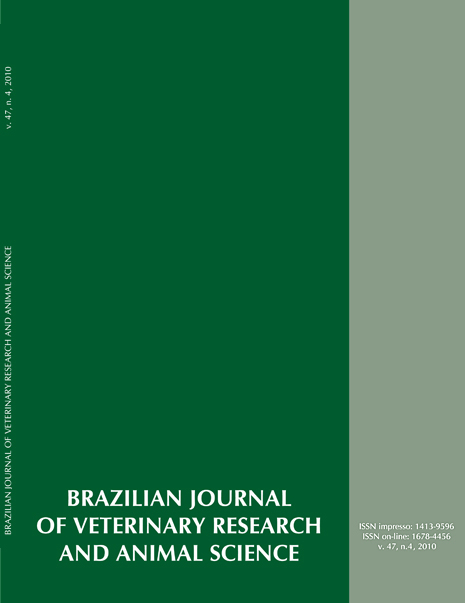Phenylbutazone effects on experimental wound healing in horses
DOI:
https://doi.org/10.11606/issn.1678-4456.bjvras.2010.26824Keywords:
Healing, Wound, Phenylbutazone, HorsesAbstract
The purpose of this study was to investigate phenylbutazone effects on second intention wound healing, and to compare the healing process between the thoracic and lumbar areas. Ten horses were submitted to circular full-thickness wound produced on both sides of the thoracic and lumbar areas. Animals were gathered into two experimental groups, one receiving daily IV injections of phenylbutazone (4,4mg/kg) and the other (control group) distillated water for five days. All wounds were daily treated with local Dakin's solution. The wound contraction rates were determined by serial measurements each 72 hours. At the 6th and 15th post surgical days, biopsies were performed for histological analysis. Thoracic and lumbar wound contraction was decreased in the phenylbutazone group. The time to complete healing was significantly greater in phenylbutazone group (49 days) than in control group (37 days). There was no significant difference between thoracic and lumbar area in the same group. Gross and histopathology analysis showed the inhibitory effect of phenylbutazone on the second-intention wound healing when compared to the control group.Downloads
Download data is not yet available.
Downloads
Published
2010-08-01
Issue
Section
UNDEFINIED
License
The journal content is authorized under the Creative Commons BY-NC-SA license (summary of the license: https://
How to Cite
1.
Hussni CA, Groh TM, Alves ALG, Crocci AJ, Nicoletti JL de M, Watanabe MJ. Phenylbutazone effects on experimental wound healing in horses. Braz. J. Vet. Res. Anim. Sci. [Internet]. 2010 Aug. 1 [cited 2024 Apr. 18];47(4):262-7. Available from: https://www.revistas.usp.br/bjvras/article/view/26824





